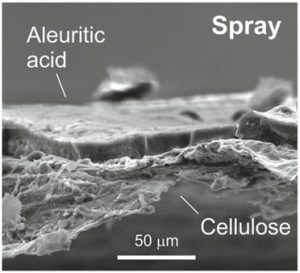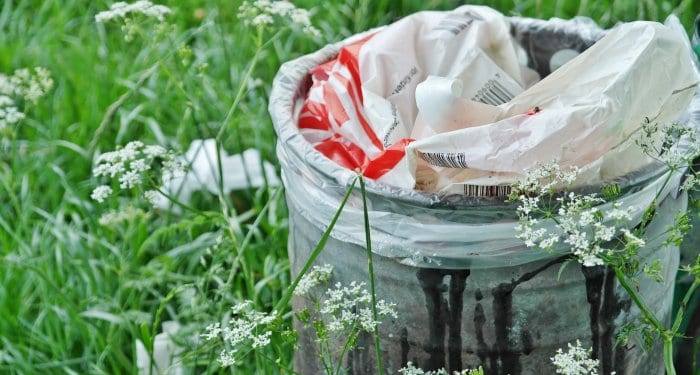Petroleum-based synthetic polymers are versatile and multifunctional materials for large-scale production of commodities. However, dwindling fossil resources, global warming, and littering problems after their life-cycle necessitate the development of plastics derived from renewable biomass sources. Cellulose, due to its virtually inexhaustible supply, is currently the prime raw material for the fabrication of green products. Unfortunately, unmodified cellulose is unsuitable for packaging applications due to its water absorbing and fibrous nature. This can be overcome by a variety of chemical modifications, but most of these approaches are toxic and hazardous processes.
In nature, plants have developed a barrier against massive water loss from internal tissues, called the plant cuticle. It is the outermost layer that covers the epidermis of fruits, leaves, etc. and consists of a long-chain biopolyester matrix (cutin), polysaccharides from the plant cell wall and solvent-soluble waxes. In addition to waterproofing, the plant cuticle plays also another important physiological role since it is the first barrier against pests and pathogens.
In their recent article in Advanced Sustainable Systems, José A. Heredia-Guerrero and his co-workers from “Istituto Italiano di Tecnologia” (Italy), University of Málaga (Spain), and “Instituto de Ciencias de Materiales de Sevilla” (Spain) report the fabrication of a novel composite biomaterial inspired by plant cuticles. The composites consist of a blend of a cutin-like polyester and carnauba wax reinforced by a fibrous cellulose substrate and were synthesized via an easily scalable process of spray and hot-pressing. Displaying good mechanical properties, sufficient optical transparency, low thermal conductivity, and good barrier properties against water vapor and oxygen, the plant cuticle-inspired material provides a new and sustainable alternative to traditional plastics for packaging applications.


















